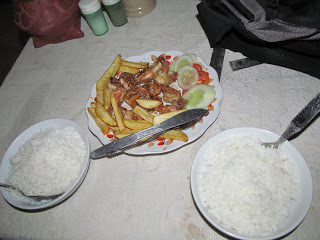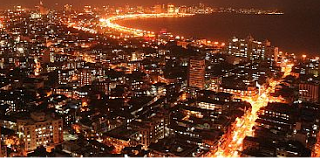China: Where Every Step Holds a Surprise
China is one of those places that keeps pulling you back — not just because it’s massive and diverse, but because it has this unique way of blending ancient history with modern energy.
One day, you’re standing in front of the Terracotta Army in Xi’an, trying to wrap your head around the fact that thousands of life-sized soldiers have stood silently underground for over two thousand years. The next, you’re in Shanghai, where the city lights reflect off glass skyscrapers and every street corner hums with life and movement.
And then there’s the Great Wall — iconic, of course, but it hits differently when you’re standing on it, looking out across the rolling hills. It’s one of those moments that stays with you long after the trip ends.
From breathtaking landscapes and incredibly flavorful food to its deep-rooted traditions, China never runs out of ways to amaze. It does offer something for everyone — whether you’re into history, food, nature, or just wandering and soaking it all in.
Beijing: Where History Comes Alive
You can’t visit China without spending time in Beijing. It’s not just the capital — it’s a living, breathing storybook of Chinese history.
Tiananmen Square gives you that sense of scale and power, but it’s the Forbidden City that makes time feel like it’s standing still. As you step through its grand gates and walk along ancient stone pathways, you can almost hear the rustle of royal robes and the quiet footsteps of palace guards. It’s easy to imagine emperors holding court right where you stand.
And then there’s the Great Wall, winding through the mountains just outside the city. Climbing it can be a workout, but once you reach the top, take a deep breath — the views are worth every step.
When to Go?
The best times to explore Beijing are in spring (April to May) and autumn (September to October). The weather is just right — cool, clear, and perfect for long walks through parks, palace grounds, and along the Wall without the summer crowds or winter chill.
Beijing is the kind of place that stays with you — not just for what you see, but for how it makes you feel. And honestly, no matter how many times I go, it always feels like there’s still more waiting to be uncovered.
Shanghai: Where the Past and Future Dance Together
Shanghai, It’s like stepping into the future. Skyscrapers light up the sky, especially around Pudong, where you’ll find the famous Shanghai Tower and other huge buildings. But it’s not all glass and steel—there’s also the Bund, with its beautiful old buildings from another time. If you’re hungry, definitely grab some xiaolongbao—they’re small soup-filled dumplings and super tasty.
Shanghai can be visited year-round, but spring (March to May) and autumn (September to November) are the most pleasant times. The city experiences warm summers and cold winters, so these in-between seasons offer moderate temperatures. If you want to experience Shanghai’s iconic skyline, fall is also an ideal time for a clear view of the city’s skyline.
Xi’an – Terracotta Warriors and Ancient Walls
Xi’an is another must-see. The incredible Terracotta Army can be found there. Thousands of life-size statues buried underground to serve as a guardian for an emperor in the afterlife. When travel along the ancient city wall for a unique perspective on the city. And don’t miss the Muslim Quarter, where you’ll find some of the best street food around.
Visiting Xi’an during the spring or autumn (September to October) is the best time. The weather is comfortable and ideal for visiting the Terracotta Warriors and the ancient city wall. These middle seasons provide the best balance because the winters can be quite cold, and the summers can be hot.
Guilin & Yangshuo – Stunning Scenery Everywhere
Nature fans should head to Guilin and Yangzhou. The landscape there is unreal. Those strange, pointy mountains look like something out of a painting. Take a boat ride down the Li River, and you’ll see farmers working in the fields, water buffaloes cooling off, and fishermen using birds to catch fish. Yangzhou is smaller and super chill, great for biking around or just hanging out.
Spring (April to May) and autumn (September to October) are the best times to visit Guilin and Yangshuo. The weather is nice for going outside and doing things like biking, hiking, and going on cruises on the Li River. Summer can be humid and rainy, while winter can be a bit too cold to enjoy the outdoor scenery fully.
Zhangjiajie – Like a Fantasy World
The mountains in Zhangjiajie served as the model for the floating mountains in the film Avatar. The s The mountains in Zhangjiajie served as the model for the floating mountains in the film Avatar. You get the impression that you are on a different planet as the stone pillars emerge from the fog. The glass bridge there is both amazing and a little frightening because it is so high! However, the views are breathtaking.
The best time to visit Zhangjiajie is in the fall, from September to November. The weather is nice, and the scenery is breathtaking, with bright foliage and foggy mornings. Although it has fewer tourists, spring is also pleasant, but summer can be crowded and winter can be too cold for some outdoor activities.Tone pillars emerge from the fog.
Chengdu – Pandas and Spicy Food
Pandas and leisure are the main attractions in Chengdu. Pandas are primarily seen eating and sleeping when you visit the panda center. The city has a relaxed vibe and is well-known for its fiery Sichuan hotpot. Hang out in a teahouse and play mahjong if you truly want to live like a local.
The best seasons to visit Chengdu are spring (March to May) and fall (September to November). Although Chengdu has a pleasant climate, the summers can be hot and muggy and the winters can be chilly. Exploring the city, visiting the Panda Center, and indulging in fiery Sichuan cuisine are all excellent during this season.
Lhasa – Spiritual and Scenic
Visit Tibet’s Lhasa if you want to have a genuinely remarkable experience. It is peaceful and spiritual, and it is surrounded by mountains. Unlike anything else in the city, the Potala Palace is enormous. You can see pilgrims, spinning prayer wheels, and monks in red robes at this powerful site.
The warm, sunny summer months of May through August are the ideal times of year to visit Lhasa. Because of its high altitude, Tibet is best avoided in the winter, when temperatures can drop below freezing and roads may be blocked by snow. Furthermore, Tibet’s main celebrations take place in the summer, adding to the cultural significance of your trip.
You cannot visit China in a week. It’s enormous, varied, and full of surprises. Every region of China has a unique story to tell, from bustling cities to serene temples, rice fields to snow-capped mountains. Keep an open mind, and you’ll leave with more than just amazing pictures—you’ll leave with memories that will last a lifetime.




